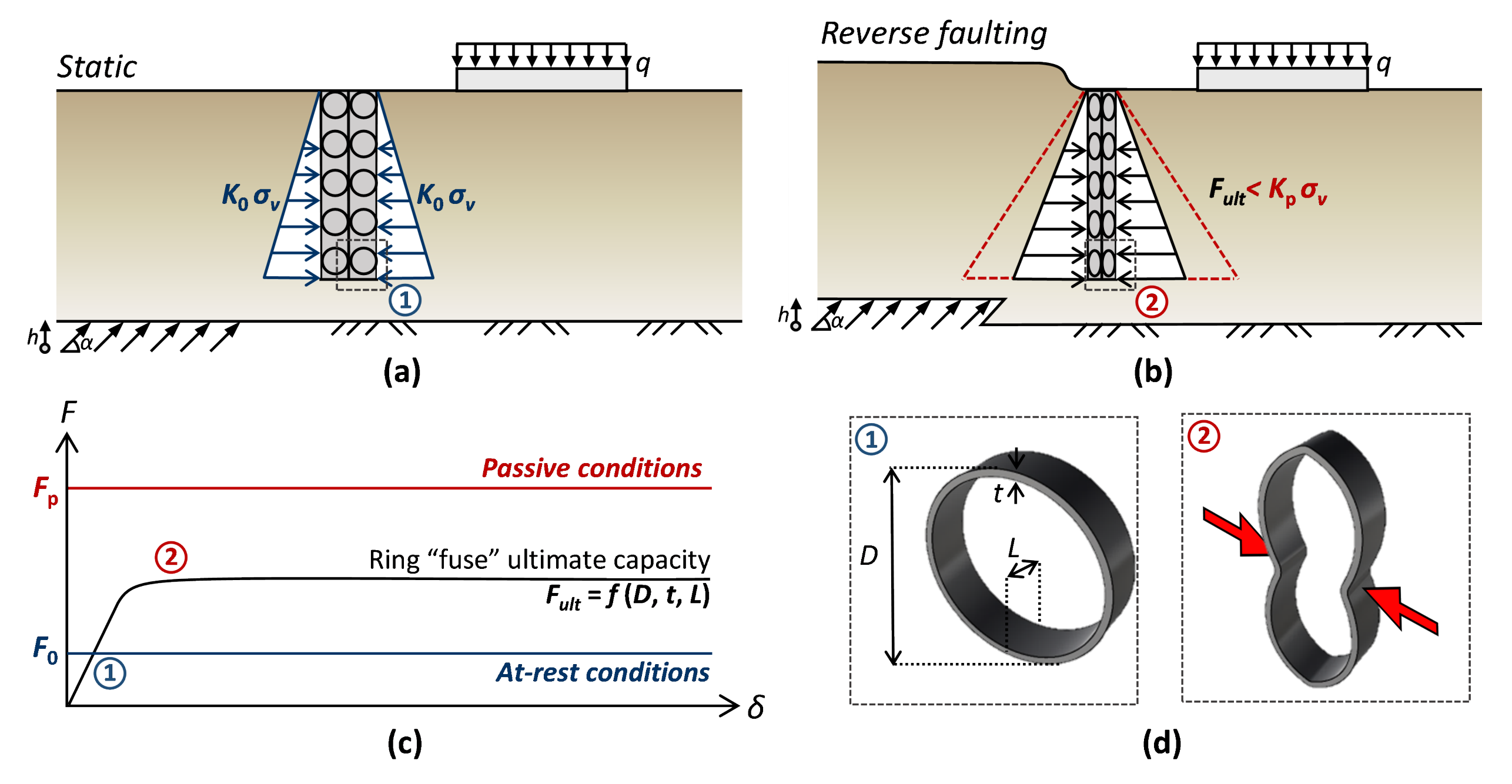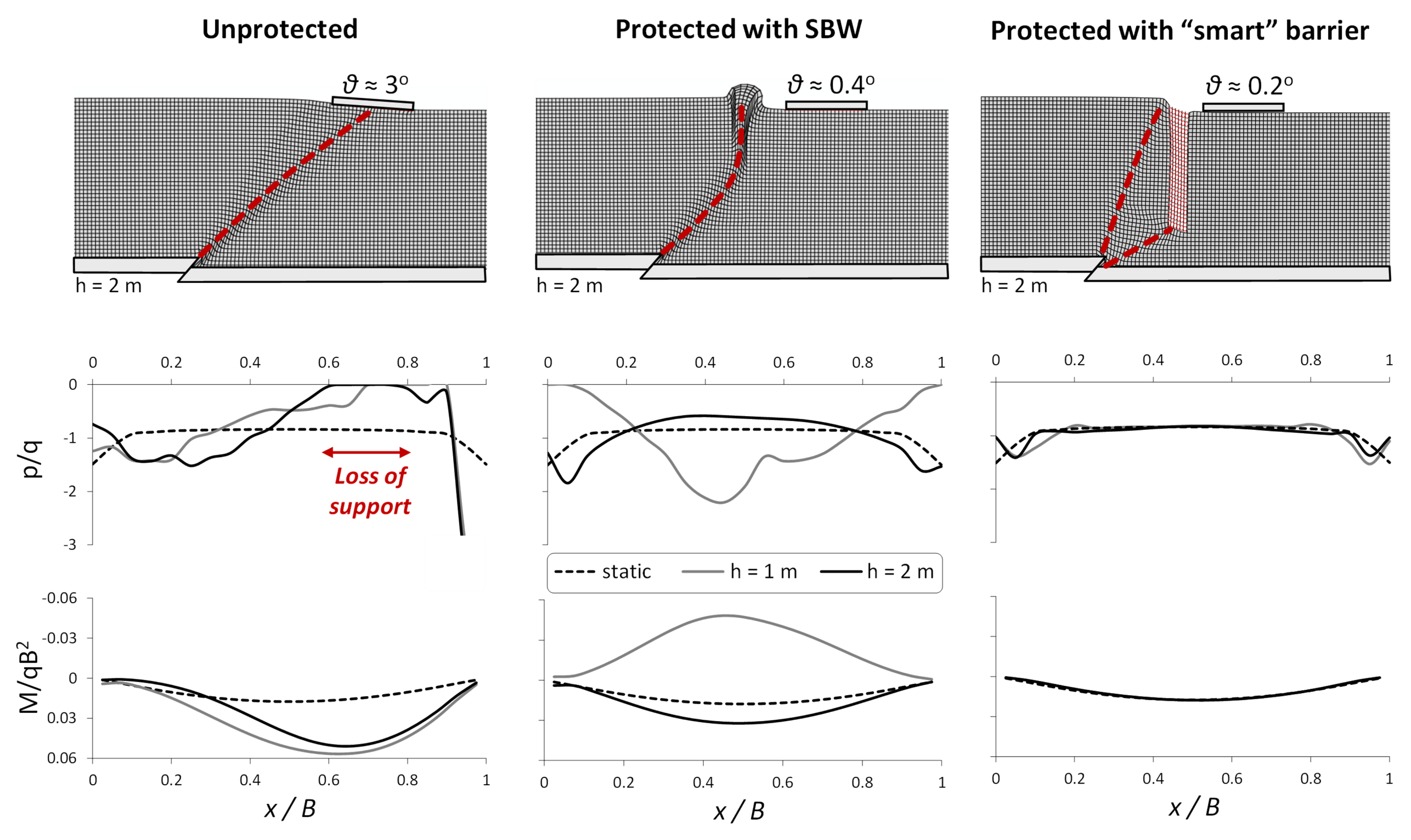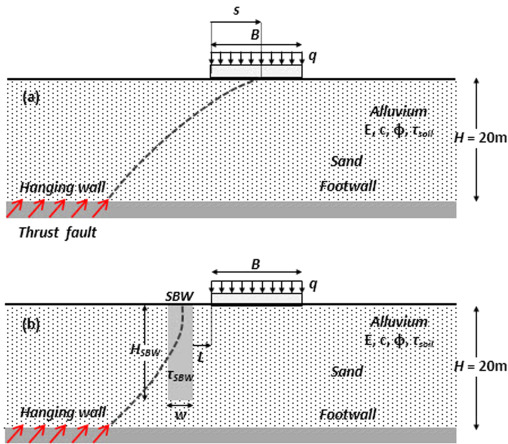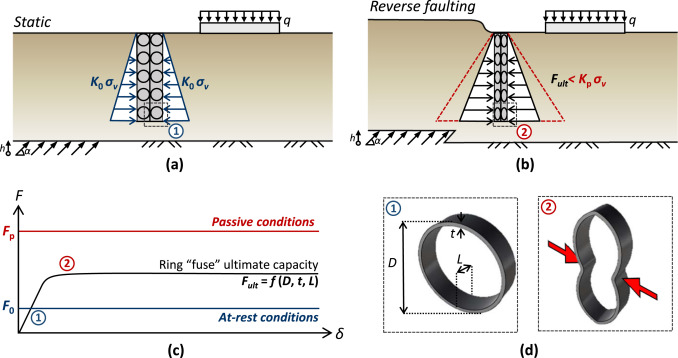Smart Mitigation Techniques
We have been working on the development of novel mitigation techniques aiming to protect critical infrastructure from thrust faulting. Instead of strengthening the foundation (and/or the superstructure) to sustain the imposed tectonic deformation, a weak wall “barrier” is placed between the outcropping fault rupture and the structure (external page J49, external page J71). Since the rupture propagates along a minimum energy path, the weaker and softer than the surrounding soil “barrier” acts as an “attractor”, leading to “absorption” of the compressive thrust of the fault, forcing the rupture to deviate upwards along its length. The weak wall barrier can be materialized through a soil bentonite wall (SBW), constructed using standard diaphragm wall machinery.

Although the SBW was shown, analytically and experimentally, to be very efficient in diverting the fault rupture, its performance can be sensitive to soil conditions and workmanship. Moreover, its shear strength may increase due to long-term consolidation, thus reducing its capability to act as a barrier. To address this issues, in our more recent work we have introduced a “smart” barrier: a “fuse” system, consisting of sacrificial members (external page J77). Such a system can be produced in the form of prefabricated panels, and its (short- and long-term) performance can be reliably predicted. Moreover, consisting of steel members, its properties are largely insensitive to local soil conditions or workmanship.

Selected recent publications

Fadaee M., Anastasopoulos I., Gazetas G., Jafari M. K., Kamalian M. (2013). “Soil bentonite wall protects foundation from thrust faulting: analyses and experiment”, Earthquake Engineering and Engineering Vibration, 12: 473–486 (external page J49)

Fadaee M., Ezzatyazdi P., Anastasopoulos I., Gazetas G., (2016). “Mitigation of reverse faulting deformation using a soil bentonite wall: Dimensional analysis, parametric study, design implications”, Soil Dynamics and Earthquake Engineering, 89: 248-261 (external page J71)

Anastasopoulos I. , Jones L (2019). “On the development of novel mitigation techniques against faulting–induced deformation: “Smart” barriers and sacrificial members”, Soil Dynamics and Earthquake Engineering, 124: 297-306 (external page J77)